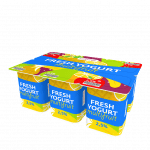Superhydrophobic coatings, which repel water and reduce surface contamination, are increasingly used in various industries, including food processing. However, when it comes to food-grade applications, including coatings for optical sensors in dairy plants, the coating must meet strict safety standards (e.g., FDA approval or EU food safety regulations) to ensure they don’t leach harmful substances into food or beverages.
Criteria for Food-Grade Superhydrophobic Coatings
To be approved for food contact, superhydrophobic coatings must:
- Be non-toxic and chemically inert in food environments.
- Not degrade or wear off easily under CIP conditions (cleaning with high temperatures, chemicals, or pressure).
- Remain transparent (if used on optical sensors) so they don’t interfere with the function of devices like NIR analyzers.
Food-Approved Superhydrophobic Coatings
As of now, there are a few commercially available superhydrophobic coatings that meet food-grade standards. Here are some that are suitable:
1. NeverWet® by Rust-Oleum
- Food-Grade Version: NeverWet produces a specific version of their superhydrophobic coating that is FDA-compliant for incidental food contact (though not necessarily for continuous food immersion).
- Transparency: The standard NeverWet product is typically milky or cloudy when dry, which may limit its use for optical sensors. However, Rust-Oleum has versions that are clearer, though not completely invisible.
- Usage: It can be applied to stainless steel and other surfaces in food environments, but it may not be fully transparent for sensor applications.
2. Ultra-Ever Dry®
- Food-Safe Version: Ultra-Ever Dry is a popular superhydrophobic coating with some versions that comply with food safety regulations. It’s marketed for applications that require high water and liquid repellency, like food processing equipment.
- Transparency: Like NeverWet, Ultra-Ever Dry is slightly opaque, and while it works for many surfaces, it may not be ideal for optical sensors where clarity is crucial.
3. HIREC® by NTT Advanced Technology
- Food-Approved Version: HIREC offers FDA-compliant superhydrophobic coatings, developed mainly for industrial and food processing applications.
- Transparency: HIREC’s coatings have been developed to minimize impact on visibility. However, it may still cause slight distortion, making it less than ideal for coating sensitive optical sensors.
Coatings for Optical Sensors
For optical sensors, such as those used in inline NIR analysis, coatings must not only be superhydrophobic but also optically clear and durable in harsh dairy environments.
Clear and Transparent Food-Grade Coatings for Sensors:
- Optical-Grade Fluoropolymer Coatings:
- Producers: Companies like Surmodics and AGC Chemicals produce fluoropolymer-based coatings that are transparent and sometimes superhydrophobic. Fluoropolymers, such as PTFE (Teflon), are often used in food-safe environments, although their hydrophobicity is not as extreme as some superhydrophobic coatings.
- Transparency: These coatings are optically clear and non-reactive, making them suitable for sensitive devices like sensors.
- Solex® Clear Hydrophobic Coating (by Hydrobead):
- Food-Grade Version: Hydrobead offers a clear, transparent hydrophobic coating called Solex®, which is FDA-approved for food contact. While it’s not explicitly branded as superhydrophobic, it offers excellent water repellency and would likely be suitable for protecting optical sensors.
- Transparency: It is optically clear, making it an excellent choice for optical sensors in food processing environments.
While superhydrophobic coatings are available for food-grade applications, many of them are not fully transparent, limiting their use on optical sensors. The best options for optical-grade, clear coatings in food processing environments are fluoropolymer-based coatings, such as those made by Surmodics or AGC Chemicals, or Solex® by Hydrobead, which provide high water repellency and optical clarity.


I tried finding these food-safe versions of the coatings online (or, even any evidence of them), and have had no luck finding any evidence that a food-safe version exists.